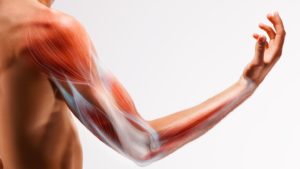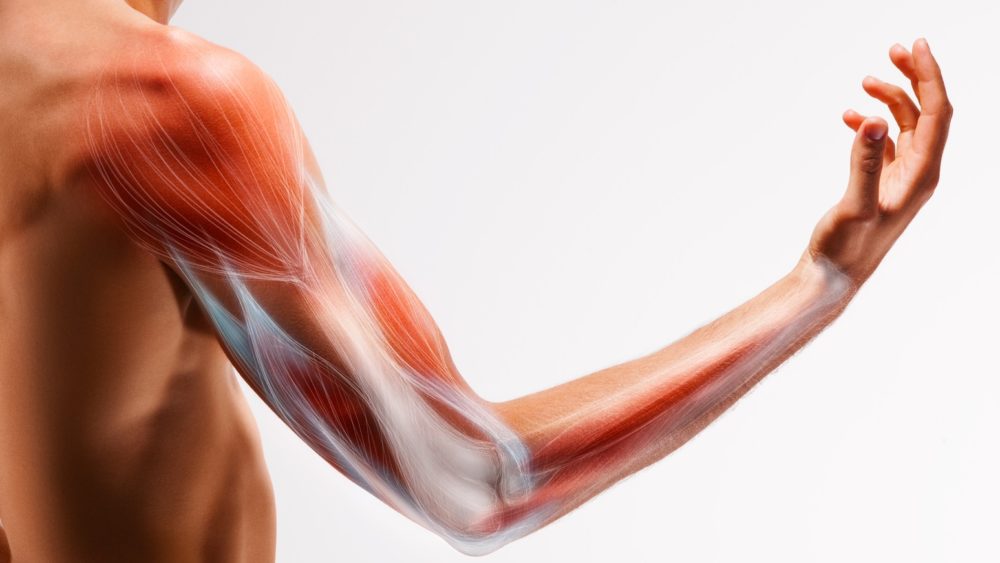In our last blog we discussed biceps tendon ruptures, which occur when the biceps tendon (located in front of the upper arm) is torn from the bone at the point of tendon attachment – either at the shoulder or the elbow.
In contrast, rupture of the triceps tendon (representing the opposing muscle group to the biceps and located at the back of the elbow) is an injury that occurs most commonly from the forced bending of the elbow during a forceful pushing activity, causing the triceps tendon attachment to separate from the bone.
The triceps muscle tendon is responsible for elbow straightening/extension and strength. A triceps tendon that has ruptured prevents the muscle’s normal function and results in weakness and restricted elbow extension.
Triceps Tendon Rupture Diagnosis
Triceps tendon ruptures are rare, accounting for just 0.8% of tendon ruptures, and therefore often misdiagnosed in the emergency department (1,2).
Symptoms may include:
- Swelling and tenderness to touch at the back of the elbow (where tendon attaches)
- Weakness/loss of strength when elbow is extended against resistance
- Inability to follow through with certain movements
This type of injury generally occurs in a sports-related trauma or harsh impact and are more frequently diagnosed in men aged 30 -50. They are more likely to occur when the biceps and triceps muscle groups are not equally strengthened and pushed to an extreme.
Additional Risk Factors:
- Excessive weight/power lifting, body building
- Systemic illness (hyperparathyroidism, renal osteodystrophy)
- Anabolic steroid use
- Local steroid injection
- Fluoroquinolone use
- Chronic olecranon bursitis
- Previous triceps surgery
- Marfan syndrome (2,3)
If this injury is missed or neglected, the individual/athlete may experience weakness with elbow extension and an inability to support a block in football, lift weights, or perform push-ups.
Triceps Tendon Rupture Treatment
While the severity of the injury will determine treatment, surgery is usually indicated in cases of complete rupture and entails tendon repair using bone suture anchors or bone tunnels. Surgery is then followed by a rigorous rehabilitation program that moves from isometric extension exercises to weight-resisted and eventually throwing exercises.
Delayed repair becomes technically demanding and yields treatment results that are inferior to acute repair (2). Early diagnosis and repair will lead to the best possible outcome.
Preventing Injury
While a triceps tendon rupture caused by trauma may be difficult to avoid, those involved in power lifting and body building should be cognizant of such repercussions from the load sport and affiliated supplements. Equal training of opposing muscle groups, regular stretching and adequate muscle rest have also been found to reduce risk of many different types of musculoskeletal injuries (4).
References
- Ahn L., Ahmad CS. Triceps Rupture. American Shoulder and Elbow Surgeons, Orthobullets.com, 2019. Retrieved from https://www.orthobullets.com/shoulder-and-elbow/3071/triceps-rupture
- Kocialkowski C, Carter R, Peach C. Triceps Tendon Rupture: Repair and Rehabilitation. Retrieved from https://www.ncbi.nlm.nih.gov/pmc/articles/PMC5734527/.
- Nikolaido ME., Banke IJ., Laios T., et al.Synthetic Augmented Suture Anchor Reconstruction for a Complete Traumatic Distal Triceps Tendon Rupture in a Male Professional Bodybuilder with Postoperative Biomechanical Assessment. Case Rep Orthop. 2014; 2014:962930. Retrieved from https://www.ncbi.nlm.nih.gov/pmc/articles/PMC3965944/.
- Tucker A. Why it Matters if One Side of Your Body is Stronger than the Other – and How to Fix It. Self, 2017. Retrieved from https://www.self.com/story/muscle-imbalances.



Comments are closed.